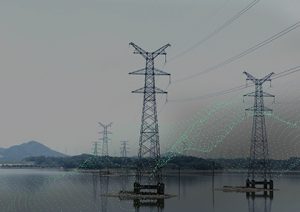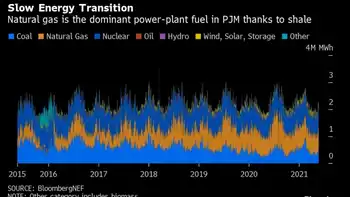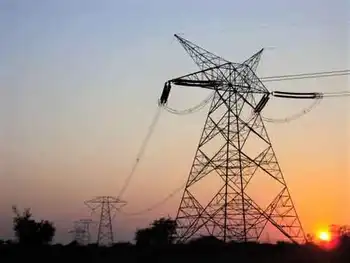OPG produces report, little information
By Financial Post
NFPA 70b Training - Electrical Maintenance
Our customized live online or in‑person group training can be delivered to your staff at your location.

- Live Online
- 12 hours Instructor-led
- Group Training Available
Ontario’s electricity generating giant, OPG, released its 2009 annual report, the same day Premier Dalton McGuinty’s Liberal government produced a Speech from the Throne. Net result — almost no media coverage! It would be nice if the same planning skills were evident at Ontario Power Generation’s nuclear and hydro projects.
In the press release, Tom Mitchell, the president and CEO, announced he “was pleased that OPG achieved this level of income in the face of challenging electricity demand conditions in Ontario.” He was referring to the $623-million in net income the company reported, although Mr. Mitchell took a while to get around to noting that the net profit was actually the product of $683-million in investment returns on OPG’s nuclear waste management fund. Otherwise, OPG actually lost $60-million in revenue of $5.6-billion. Revenue was down $719-million from $6.1-billion in 2008.
I searched in vain the report for the answers to the “Big Becky” questions I posed (in the Financial Post) on March 4. Big Becky is the drilling machine that is boring a $1.6-billion tunnel near Niagara Falls, Ontario, to increase hydro power. Originally priced at $985-million, it’s now running 60% over budget due to undisclosed errors, likely on the part of OPG, regarding the rock formations. Nothing else could explain why OPG appears to be picking up the full cost of the overrun. The 2009 annual report is silent on Big Becky except for repeating almost word for word the information that was in their third quarter report released on November 20, 2009.
OPGÂ’s 11% revenue decline was not matched by corresponding declines in costs or productivity gains. Total employment still exceeded 12,000 and OPG disclosed they had another 1,000 contract employees. IÂ’m confident that when OPG releases the numbers on how many employees earned over $100,000 in 2009 that it will have grown from the 52.5% on the list in 2008.
Operations, maintenance and administration (where salaries reside) did drop slightly by $85 Million or 2.9%, but as a percentage of revenue climbed from 46.6% to 51.1%. Terawatts sold also declined by 15.3% from 107.8 in 2008 to 92.5. Even their MW capacity declined, by a little under 1% (but down 19% from 2000). Fuel costs were down about 1% as a percentage of revenue. Production, fuel costs and sales were down but labour costs up.
So its comes down to this — OPG needs to have the stock markets perform well so it can count on a $10-billion nuclear waste slush fund to give the impression that its operations are doing well.
Looking at OPGÂ’s debt (short and long term) levels we note that it went up by $246-million from 2008 and sits at $4.1-billion as of December 31, 2009. Looked at historically, this debt compares to $53-million in March, 2003, shortly after the companyÂ’s previous debt load was moved as stranded debt to the Ontario Electricity Financial Corporation.
Since then, OPG invested heavily in revamping its nuclear capabilities by refurbishing its Pickering A facilities. The company exceeded its original budget of $800-million by a factor of 3 or 4. We also know that “Big Becky” has bumped OPG’s borrowing requirements by about $1-billion more than they have invested to this point. We also know that considerable monies must be set aside each year in the nuclear fund carried on the balance sheet for decommissioning those nuclear plants and disposal of the fuel rods. The funds now have climbed to $10.246-billion as of December 31, 2009.
Offsetting this on the balance sheet is a long-term liability referred to as “Fixed asset removal and nuclear waste management.” As of December 31, 2009, this was recorded as $11.859-billion or almost double the non-depreciated value ($6.654-billion) of those nuclear assets.
So why are we investing in this form of electricity generation when it costs two to three times the estimate to build them and three or four times the original cost to decommission them? The management report describes the approved decommissioning of the nuclear plant liabilities as follows; “The undiscounted amount of estimated future cash flows associated with the liabilities is approximately $25-billion in 2009 dollars.” We’re almost half way to that level and the McGuinty government is talking about new refurbishment at its Darlington operation.
Compared with nuclear, even the $1.6-billion Big Becky hydro project starts to look cheap (assuming it comes in at the revised price) — even though the cost of hydro from the Niagara tunnel will be north of 11¢ per kilowatt hour (kWh), according to the company. Hydro Quebec sells its power to their distribution arm for 2.79¢ per kWh. How do they do that? Has OPG really explored their options or do they simply take their marching orders from the Ministry of Energy and Infrastructure, which in turn is controlled by the Premier?
Why has politics usurped common sense and why does it look like the high-paid management of OPG isnÂ’t presenting alternatives to their political masters?











